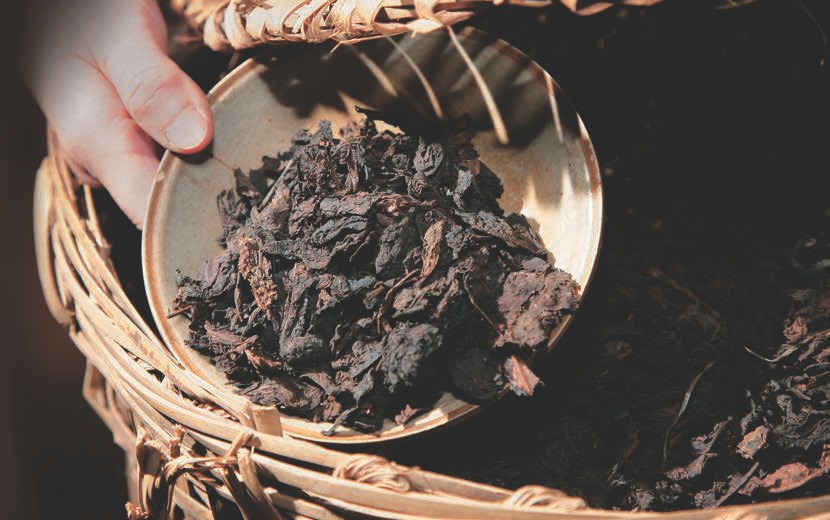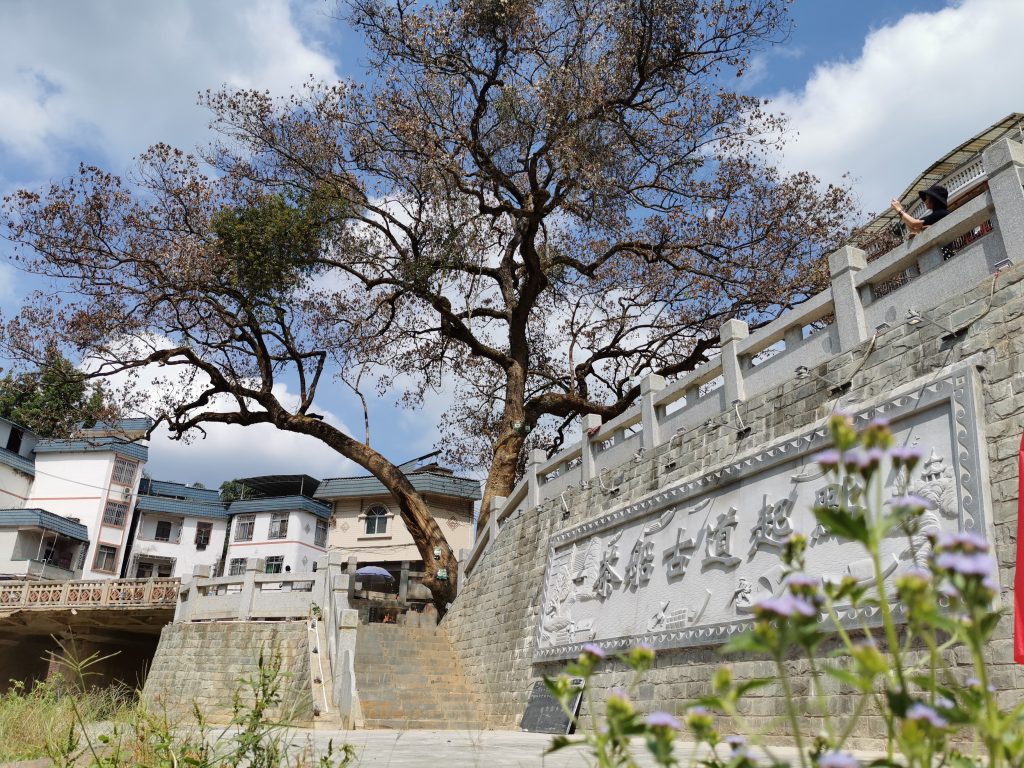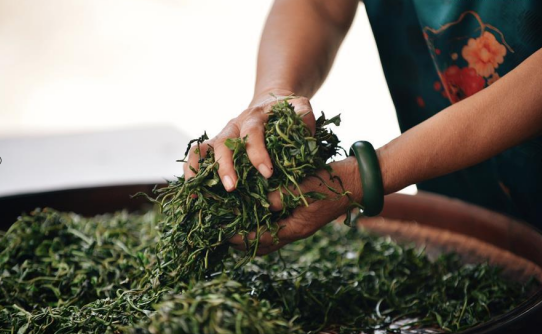

By Chen Zhiying
Tea is an aromatic beverage with a history of more than 4,000 years. Drinking tea is able to naturally relieve a person of thirst while satisfying their spiritual needs and giving comfort and pleasure. Among the varieties of tea, Liubao tea in Wuzhou is known and popular across the world for its distinctive features like the dark color, strong flavor, years of preservation, and mellowness. Growing on high mountains, enveloped in clouds and mists and in a clear atmosphere, it also carries the refreshing air of nature. A cup of clear and fragrant Liubao tea helps the body become cleaned and balanced.

Seeking the footprint of Liubao tea following the ancient tea-boat waterway
According to historical records, Liubao tea dated back to the Tang Dynasty (AD 618-907), and later during the Qing Dynasty (AD 1644-1912), it was listed as one of the 24 famous teas in China for its special flavors that resemble aromas such as areca and litchi. Gaining such reputation, it was soon known at home and abroad and became one of the highest priced teas. Nobles would drink it daily for health and beauty and it was given as gifts to visitors and travelers. It was even in the tributes to Qing Emperor Jiaqing. At that time, because of the inconvenience of road transport, waterway become the best choice for Liubao tea to go outside. High-quality Liubao tea was shipped out of the mountainous growing areas on bamboo rafts to Guangzhou where it was put onto large ships and transported to Nanyang and other parts of the world, becoming one of the major commodities on the Maritime Silk Road. The whole route for tea trade earned the name Chachuangudao, literally meaning the ancient tea-boat waterway.

When the tea trade reached its peak, people cannot see the end of boats lining up at the Hekou wharf. Boats of different sizes shuttled back and forth on Dong’an, Hejiang, and Xijiang rivers. The thriving tea trade also increased the number of docks and fairs along the waterway. Until 1937, when the War of Resistance Against Japanese Aggression broke out, the shipping of the whole Xijiang River was at a standstill, and the transportation and sales of Liubao tea were fatally hit. Even after the war ended, the sales of Liubao tea was much lower than before and many tea plantations were abandoned. The once prosperous tea-boat waterway went into a decline since then. However, the fragrance of Liubao tea spread to the world along the route which in turn also endowed Liubao tea with historical values.
Tips: The ancient tea-boat waterway starts from Hekou wharf in Liubao, passes through Dong’an, Hejiang and Xijiang rivers, and reaches Guangzhou, Hong Kong, Macao, and Southeast Asian countries.
Basking in the lingering aroma while making tea
With a history of more than 1,400 years, Liubao tea has also evolved a processing technique in the long time. The steps usually go like this: picking tea leaves, killing green which means to make the leaves dry and wither to slower down oxidation, rolling, and piling the leaves to ferment. After long periods, the tea sometimes had on it yellow molds which are known as ‘golden flowers’, a sign of excellent fermentation. It was said that in the middle and late Qing Dynasty, because of the high quality of Liubao tea, merchants from Guangdong and Hong Kong came to Liubao Village to buy tea leaves. To seek excess profits, the merchants tried every means to lower the price. Faced with the captious tea merchants, farmers found a way to cope with them, which was to sprinkling water on the dry tea leaves to increase weights. During the long-distance transportation, the tea leaves heaping together finished fermentation. Because the bitter taste of the original tea was reduced, it became mellow and welcomed by the market. The processing techniques of Liubao tea thus developed. The final step of making Liubao tea is called aging, after which the tea develops a deeper red color and a classic time-honored Liubao flavor.

With the development of technology and in today’s fast-paced world, machines have been widely used to process Liubao tea but the hand-making skills are irreplaceable. Although it requires a huge reserve of patience, passion, and vocation, it’s worth the time and pain. Only when the tea leaves are processed manually, can the shapes of leaves are better and the aroma of tea be fully aroused. And you’ll find out when you slow your pace and are in a good mood, the tea you make will be tasty. If you are in a hurry and lose your temper, the flavor will change. It’s a reflection of your inner mind.
The features of dark color, strong flavor, years of preservation, and mellowness won Liubao tea a place on the national intangible cultural heritage list in 2016, attracting people from far and wide to have a taste. After a long time of silence, it is now reclaiming its former glory.
In today’s bustling world, why not slow your time by savoring a cup of mellow Liubao tea, so that to perceive the richness and deepness of lives and add a poetic quality to your days?
桂ICP备14000177号 Copyright@2006-2013 Guangxi China-ASEAN Panorama Magazine Agency Co., Ltd. All Rights Reserved